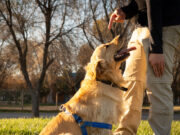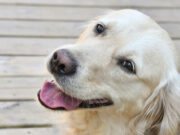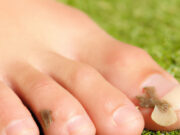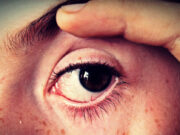A measuring cup set is an essential kitchen tool, and it is always recommended that you use it for all new recipes that you try. To get the best cooking results from recipes, measure all ingredients with metric measuring cups and spoons and arrange them in the order of use before beginning with the directions. This will make cooking easier, reduce the chances of forgetting to add/use critical ingredients, and most importantly, save time searching for the ingredient while the cooking process is already underway. The recipe requires adding the next ingredient at a specific stage to avoid overcooking.
After reading this article, you will understand how to measure ¾ cup without a measuring cup.
Ingredient Measuring Without a Measuring Cup
Let’s take a closer look at how to accurately measure your ingredients, even if you don’t have a measuring cup in your cooking area. One cup, 1/2 cup, 1/3 cup, 1/4 cup, and 1/8 cup are the most common cooking measuring cup sizes. One tablespoon, 1/2 tablespoon, one teaspoon, 1/2 teaspoon, and 1/4 teaspoon are the most common spoon sizes.
Estimation based on size comparison:
The use of specific objects will assist you in determining an estimate that compares to the actual size. For example:
- A teaspoon is roughly half the size of a regular teaspoon
- A half-cup is approximately the size of a tennis ball.
Observing a transparent glass will also help you become acquainted with the use of volume and size.
Make use of tablespoons and teaspoons:

When substituting a tablespoon or teaspoon for a cup, keep in mind that a cup equals 16 tablespoons. With this, you can easily measure a half cup of any liquid with eight tablespoons.
To avoid mess, pour the liquid slowly while holding your tablespoon or teaspoon over a container.
When you pour the liquid into the container, you can mark it for future measurements.
Utilize a kitchen scale:
A kitchen scale can be used to weigh both solid and liquid ingredients. To begin taking the measurement, weigh the container. Then, on the scale, press zero to display the weight of the container as zero.
Pour in the liquid and stop when you reach the desired volume. You’ll be able to get an accurate measurement of the drink this way.
If your kitchen scale has a setting for different liquids, change it for each one.

Make use of your hands:
When there isn’t a cup available, this is a common way to measure dry food ingredients. When you’re a beginner or still honing your cooking skills, it’s best to stick to a cup and a teaspoon. On the other hand, consistent practice can help you use your hands as a measuring tool.
Almost every day, you can easily measure the same amount of sugar, flour, and rice that you’ve cooked. That’s because you’ve been using the same amount for so long that you can tell when it’s too little, too much, or just right.
This approximate measurement can also be used,
- 1/8 teaspoon is equal to a pinch with your thumb, forefinger, and middle finger.
- 1/4 teaspoon is equivalent to two pinches with your thumb, forefinger, and middle finger.
Make use of a cloth:
If you are unsure about measuring with your hands, a cloth can be used. Place a cloth on the table. Then, one at a time, pour a cup, half a cup, and other amounts of the ingredients on top.
The plan is to make a mental note of the sizes for future reference. As a result, you can use the cloth to measure different ingredients at any time.
Make use of a bowl:
Like the cloth, you can use a bowl and pour in one ingredient cup. Then, without a cup, take the exact measurement using only the bowl.
Accurate Measuring Techniques
Stay away from air pockets:
When measuring out ingredients, make sure there are no air pockets. Don’t just scoop ingredients like brown sugar that are primarily moist. Instead, pack it tightly to avoid air pockets.
You can pat it up to the top with the back of a spoon. Then smooth it out. When you remove the brown sugar, it should look like the shape of the cup if you packed it correctly.
Make use of a scale:
A scale is an easy-to-use tool that provides accurate measurements, and it also allows you to measure in grams, milliliters, ounces, or fluid ounces. If you bake frequently, this is a good option, and you’ll probably get more consistent results when you use it to measure your ingredients.
Handle sticky ingredients with care:
Sticky ingredients (such as honey) can be challenging to measure. Dip your measuring cups or spoons in hot water or vegetable oil before using them. Then, without drying the ingredients, measure them.
Cooking spray is another option. Before measuring, coat your measuring cup with it, ensuring accurate measurements and easy removal of the ingredients.









![Best and Reliable Foldable electric Wheelchair for Adults and Seniors [2022] Electric Wheelchair for adults and seniors](https://wntoknow.com/wp-content/uploads/2022/04/Electric-Wheelchair-for-adults-180x135.jpg)



![Top 7 FDA Approved Pulse Oximeter [2022] FDA Approved Pulse Oximeters](https://wntoknow.com/wp-content/uploads/2022/05/FDA-Approved-Pulse-Oximeters-180x135.jpg)










![Top 7 FDA Approved Pulse Oximeter [2022] FDA Approved Pulse Oximeters](https://wntoknow.com/wp-content/uploads/2022/05/FDA-Approved-Pulse-Oximeters-238x178.jpg)



